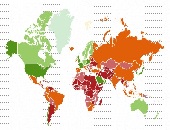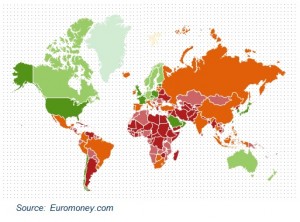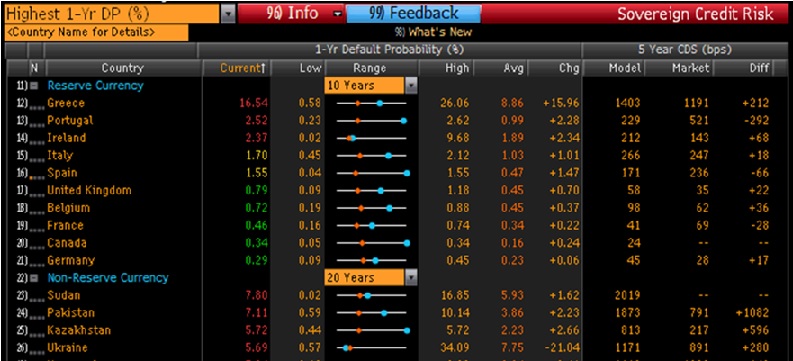“The Bloomberg sovereign risk model starts by dividing countries into two types,” said Rajan Singenellore, “reserve-currency countries and non-reserve currency countries. Everything else depends on that distinction.” Singenellore is Product Manager, Risk & Valuations at Bloomberg and was the second of two speakers to address a GARP webinar audience on September 12, 2013. A reserve-currency country is one whose currency is held in significant quantities by other governments as part of their foreign exchange reserves, such as the US and the Japan.
There is a pressing need for quantification in the area of sovereign credit risk, he said, citing as an example an insurance company that needs to understand expropriation risk within a foreign country before pricing its liability insurance.
“Models of sovereign risk are often mixed, qualitative and quantitative,” said Singenellore. The qualitative component might be scores for political risk such as from the Economist Intelligence Unit (EIU) or the PRS Group. Quantitative components can be further broken down into economic (such as GDP); fiscal (such as federal deficit); monetary (exchange rates); and market (capital flow) inputs. Some models assume that the probability of default follows a logistic or normal distribution.
Credit rating agency models are based on multiple qualitative and quantitative factors, said Singenellore, and key to their analysis is “ranking among peers and comparison across countries.”
Scoring models such as those used by Euromoney rely on a weighted factors approach. (See map of country risk hot spots.)
For reserve-currency countries, the Bloomberg model “is all about the surplus or deficit,” said Singenellore. “How much is available for interest payments?” For non-reserve currency countries, the Bloomberg model “focuses on the reserve ratio, the ratio of currency reserves to debt,” he said. It becomes a measure of solvency.
The drivers of sovereign risk vary depending on the country type. The reserve currency countries must be always aware of expenditures, not just revenues and debt.
The Bloomberg proprietary sovereign risk model, SRSK, provided results that were discussed in the remainder of Singenellore’s presentation (see screen shot). The SRSK model is “based purely on financial, economic, and political risk factors,” with no subjective judgments.
Quantitative models must be validated against real-life data. A good model “should provide early warning of distress” and the estimated default probability should match the actual. Singenellore went on to provide case studies of defaults, predicted (or not) to give some idea of the SRSK software’s strengths and limitations. There are indeed some things to watch out for when applying a sovereign risk model.
Greece The profile of sovereign risk drivers for this country showed a rising deficit following the financial crisis. The probability of default increased when the deficit increased, and there were two red vertical “event lines” on the Bloomberg chart, corresponding to the IMF bailout and the all-out default in 2012.
Ireland, like Greece, is another reserve currency country. A plot of non-performing loans increased as the probability of default increased. “It is a textbook case of bad bank loans and slowing economy.”
Argentina is a non-reserve currency country. It evinced an ability to pay but no willingness to pay. “One should … watch out for externalities that affect willingness to pay, that are not in the model,” Singenellore said.
Egypt is a non-reserve currency country, but it appears to be holding up its reserve ratio despite political turmoil. “Regardless of the queasiness in markets, there has been no default.”
Japan, US Last, Singenellore noted that these two countries were special cases. They have “the ability to roll over debt constantly and keep refinancing” In spite of large deficits. Their low sovereign risk depends strongly on the confidence of the markets. ª
The webinar presentation slides can be found at: http://event.on24.com/r.htm?e=671407&s=1&k=907DC03AC48BC5B9B0D994B76812F199>
Check out Rajan’s previous webinar on quantitative risk estimation at: http://textmedic.ca/monitoring-risk-while-pursuing-high-returns-the-importance-of-being-quantitative/
Fascinating reading on the International Country Risk Guide put out by the PRS Group can be found at: http://www.prsgroup.com/ICRG_Methodology.aspx



